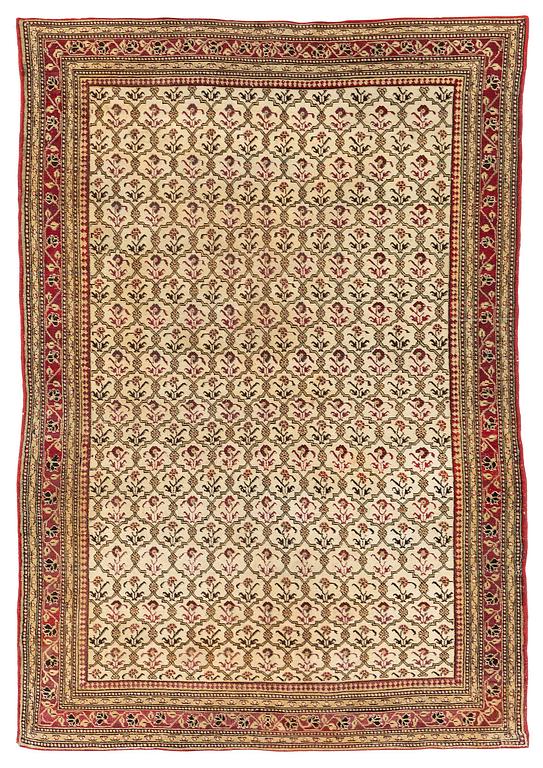An antique Agra carpet Of Mughal 'Shrub' design, northern India, c. 270 x 180 cm.
Circa 1890. Bone white ground with a large polychrome trellis with flowers, so-called "Shrub" design. Wine red main border with palmette and floral vine.
Tuontiarvonlisävero
Tuontiarvonlisävero (12%) tullaan veloittamaan tämän esineen vasarahinnasta. Lisätietoja saat soittamalla Ruotsin asiakaspalvelumme numeroon +46 8-614 08 00.
Muut tiedot
During the reign of Emperor Shah Jahan (1628-1658) in 17th-century Mughal India, increased attention was paid to the naturalistic representation of the surrounding flora. Distinct patterns consisting of rows or trellis arrangements of naturalistic flowers were woven on rich ruby-red grounds, precisely depicting recognizable specimens of lily, poppy, carnation, tulip, violet, and daffodil. Such patterns remained popular among Indian weavers, both in carpets and textiles, for the next hundred years, although greater artistic liberties were taken over time, often making identification problematic. Many of these Mughal-inspired carpets knotted during the 19th century were woven in the prisons of Agra and Lahore, which employed similar repetitive floral patterns albeit with slight variations in colour palette.













































